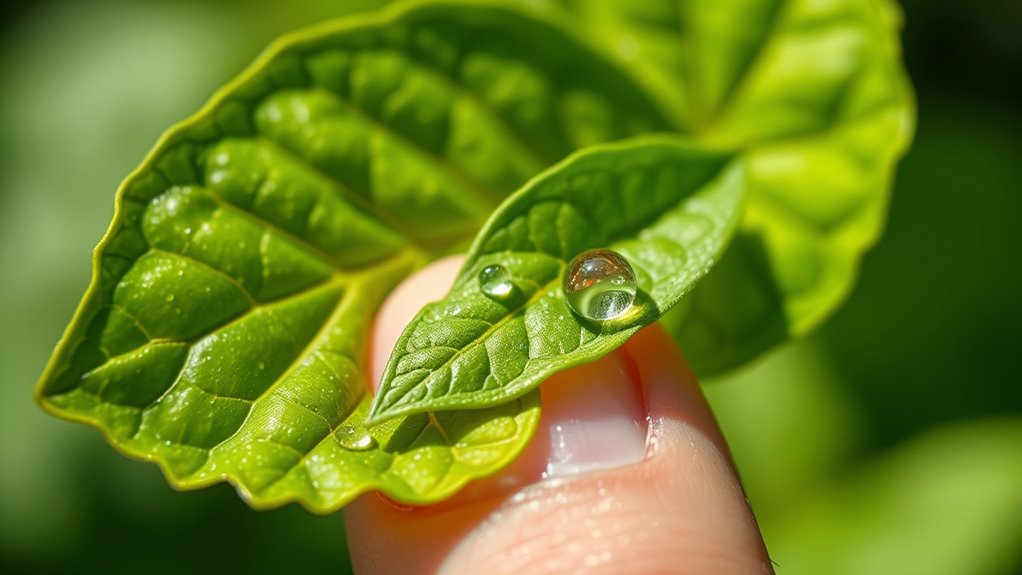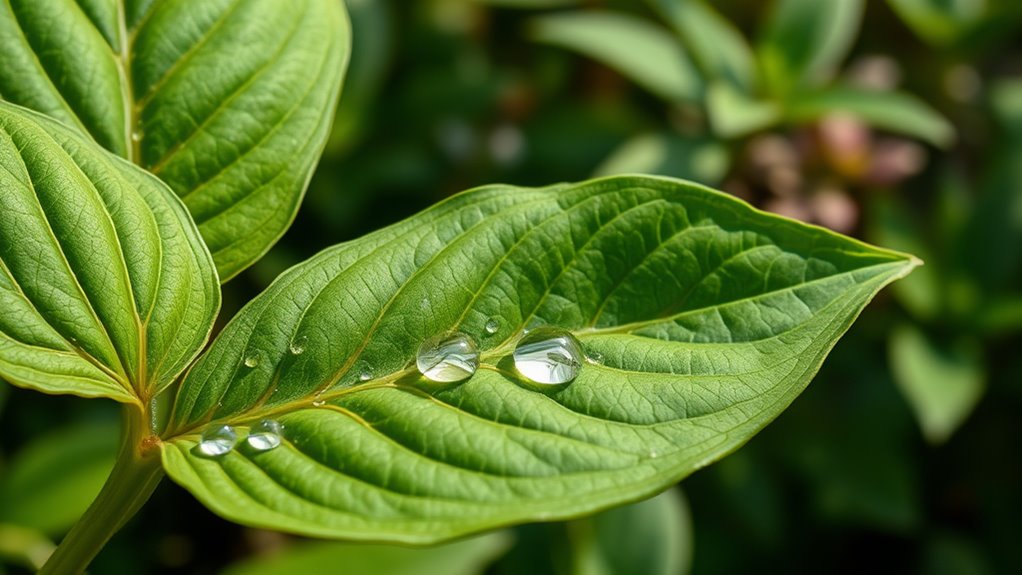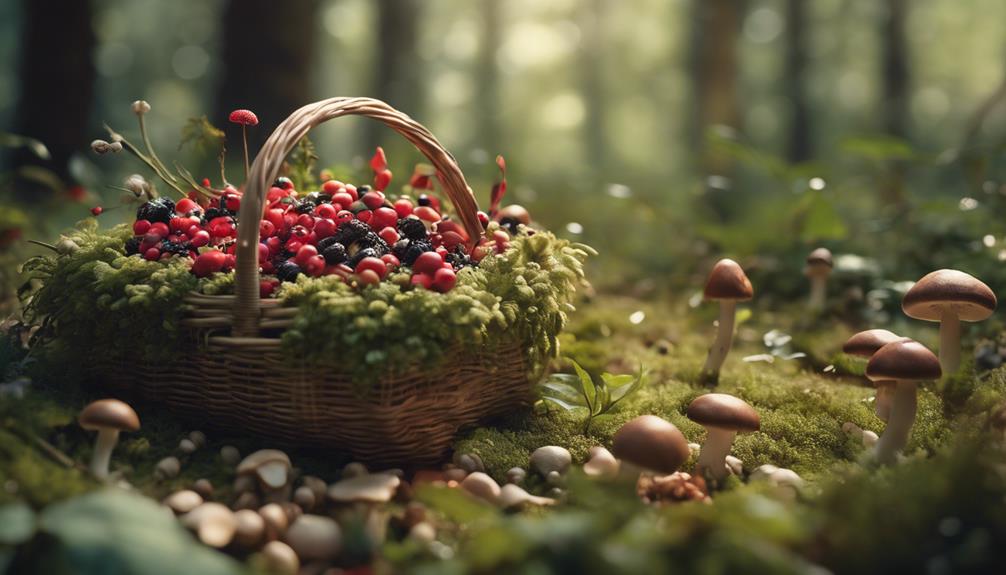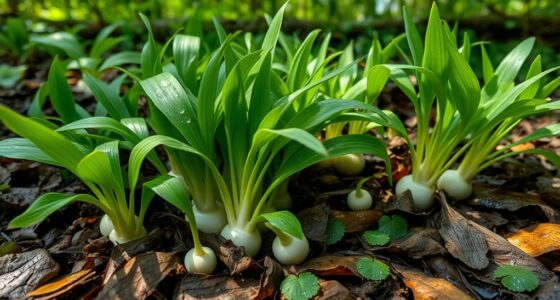You can turn common lawn leaves into powerful first-aid remedies by harvesting fresh plantain leaves, which are known for their anti-inflammatory, antimicrobial, and soothing properties. Crush or chew the leaves to release their juices and apply them directly to insect bites, cuts, or skin irritations for quick relief. Brewing the leaves into tea can also aid internal issues like coughs or inflammation. Keep exploring to learn more about harnessing plantain power for natural healing.
Key Takeaways
- Identify and harvest fresh plantain leaves from your lawn for quick, natural first-aid remedies.
- Crush or chew leaves to release juices, then apply directly as poultices for cuts, bites, or skin irritations.
- Use brewed plantain leaf tea or tinctures internally to soothe respiratory issues and reduce inflammation.
- Properly recognizing plantain varieties ensures effective medicinal use and safety in field first-aid.
- Incorporate plantain preparations into your first-aid kit as a natural, accessible alternative to synthetic remedies.

Have you ever considered how plantains can be a powerful addition to your diet? Beyond their culinary uses, their leaves and roots have been celebrated for centuries as part of herbal remedies, offering natural healing properties that you might not have explored yet. These humble plants, often mistaken for the banana family, are packed with nutrients and medicinal qualities that can support your health in surprising ways. When you think of plantains, it’s easy to focus solely on their delicious, starchy fruit, but their leaves hold a treasure trove of benefits that can turn them into a natural first-aid resource in your home.
Plantain leaves are rich in compounds that possess anti-inflammatory, antimicrobial, and soothing effects, making them ideal for treating skin irritations, insect bites, and minor wounds. Using fresh leaves as a poultice is a time-honored practice rooted in herbal remedies and natural healing traditions. You simply crush or chew the leaves until they release their juices, then apply them directly to the affected area. This process helps reduce swelling, alleviate pain, and promote faster healing without the need for synthetic chemicals. Because plantains contain allantoin—a compound known for its skin regenerative properties—they’re especially effective for soothing rashes, cuts, and insect stings.
In addition to their topical uses, plantain leaves can be brewed into teas or tinctures, offering internal support for respiratory issues like coughs and bronchitis. Their anti-inflammatory properties help soothe irritated tissues, providing relief from congestion and promoting immune system health. Incorporating plantain into your herbal remedies kit is simple and cost-effective, and it’s an excellent way to harness the power of natural healing. Understanding how data analysis can help identify the best plantain varieties for medicinal use enhances your ability to create effective remedies. When you understand how to identify and prepare plantain leaves, you gain a versatile tool for first-aid that’s readily available in your backyard or local park.
Frequently Asked Questions
Can Plantain Leaves Be Used for Animal First-Aid?
You can definitely use plantain leaves for animal first-aid, as they are popular in herbal wound care and animal healing remedies. When your pet has a minor cut or scrape, crush fresh plantain leaves and apply them directly to the wound. Their anti-inflammatory and antimicrobial properties help reduce swelling and prevent infection. Always verify the leaves are clean, and consult a veterinarian for serious injuries, but plantain is a natural, effective option.
How Long Does It Take for Plantain Remedies to Work?
Did you know that herbal remedies often act faster than synthetic medicines? When you use plantain for first aid, you might see relief within 5 to 15 minutes, thanks to its anti-inflammatory and soothing properties. The remedy timeline varies based on the wound and application method, but generally, plantain’s herbal efficacy provides quick soothing effects, making it a reliable natural option for minor cuts and bites.
Are There Any Side Effects From Using Plantain on Wounds?
When using plantain on wounds, you might worry about side effects. Generally, it’s safe, but watch for allergic reactions or skin irritation, especially if you have sensitive skin or allergies. Some people could experience redness, itching, or swelling. Always do a patch test first. If you notice any adverse effects, stop using it immediately and consult a healthcare professional. Proper use helps minimize the risk of side effects.
Can Plantain Be Cultivated Indoors for Emergency Use?
You might wonder if indoor cultivation of plantain is practical for emergency preparedness. While it’s possible, growing plantain indoors requires ample sunlight, proper soil, and space. You’ll need to mimic its natural environment for healthy growth. If you can meet these needs, having a ready supply of plantain leaves can be a valuable natural first aid resource. Just remember, consistent care is key to ensuring it’s available when you need it most.
What Other Common Weeds Can Be Used for First-Aid?
You can use medicinal weeds like dandelion, chickweed, and mullein for first-aid. These edible plants have natural healing properties, making them handy in emergencies. Dandelion leaves can soothe skin irritations, while chickweed helps with minor cuts and burns. Mullein leaves and flowers are great for respiratory issues. Keep these common weeds in mind; they’re accessible, effective, and useful for quick field first-aid.
Conclusion
Now that you know how to turn simple lawn leaves into powerful plantain remedies, you hold nature’s secret in your hands. Imagine harnessing the earth’s own medicine cabinet, whispering healing into your life whenever needed. Just like a hidden treasure beneath your feet, these leaves are waiting to transform your first aid routine. So, go ahead—embrace this green gift and let nature’s power be your ultimate first responder. The world of healing is right outside your door.










